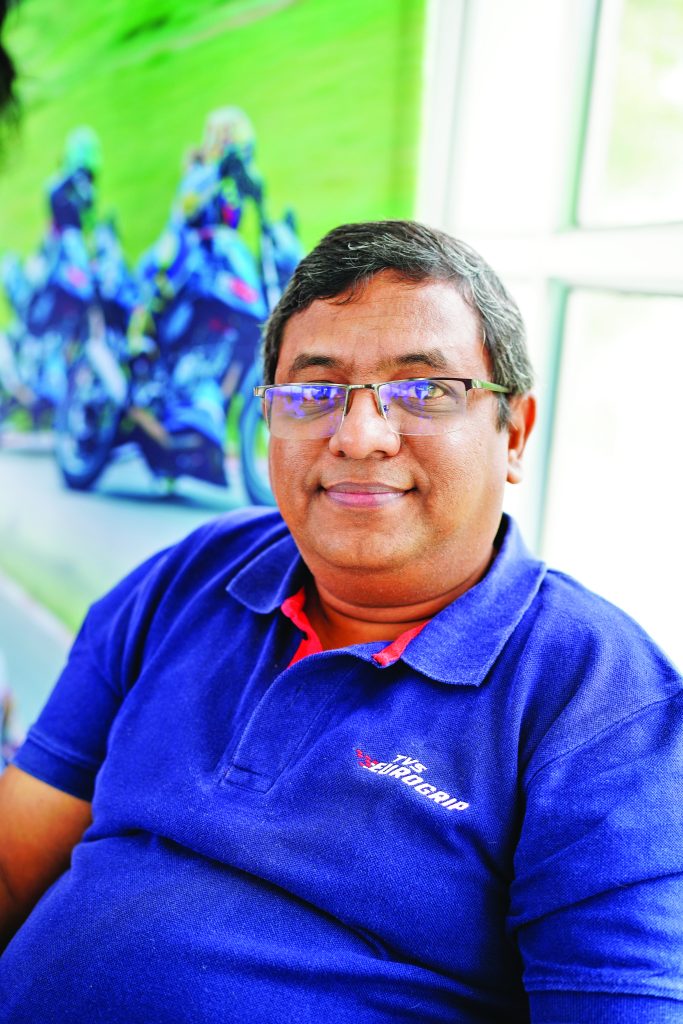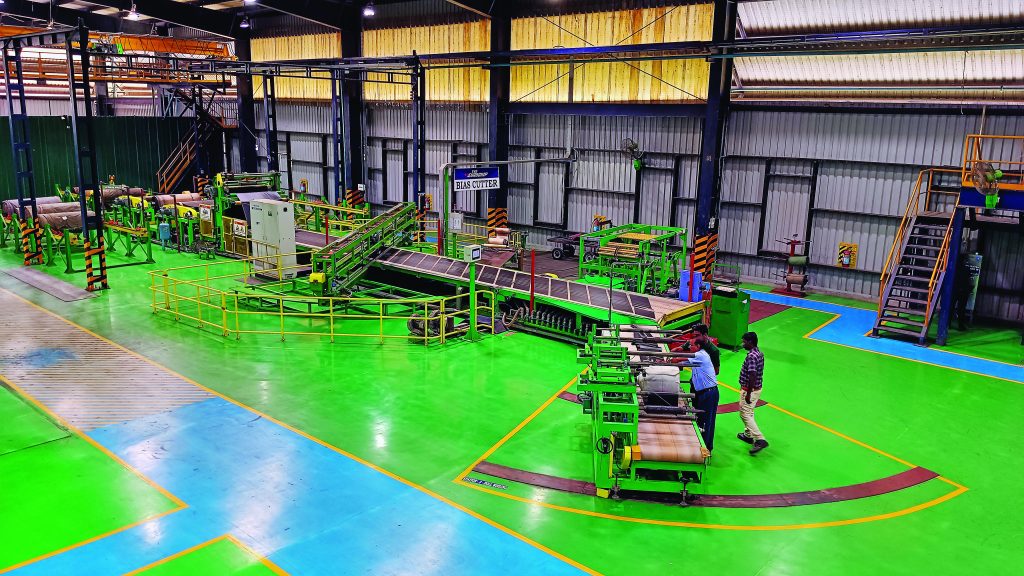We had an opportunity to talk to V Sivaramakrishnan, Chief Technology Officer, TVS Srichakra Limited, in the course of the TVS Eurogrip Roadhound tyre test. He had some interesting things to say. Here are the excerpts.

Interviewed by: Joshua Varghese
Bike India (BI): The sport-touring Roadhound tyre is more an all-rounder for premium motorcycles. Do you intend to go into a purely sport-oriented application?
V Sivaramakrishnan (VS): At the moment, we do not intend to cover that segment. About 80 to 85 per cent of our customers would like to have an optimal tyre that is well balanced between handling characteristics and life. However, we are planning to have a special series, called the Supersport, which will come in 2025.
BI: What are the challenges when making an EV tyre as compared to a regular one?
VS: Our manufacturing facilities are built to produce EV tyres. All our equipment is upgraded and it is future-ready. A typical EV tyre requires silicon mixing, silicon treads, and silica extrusion. We have the facilities to do it. Price is one of the biggest challenges. They require EV-specific materials and they are expensive. To achieve life, grip, and fuel efficiency, we need to use a generation-four or generation-five polymer. They are difficult to produce and very expensive, which increases the price of the tyre. Markets at this point in time are unable to accept such a big price difference. Our biggest challenge is to develop technologies which can be competitive in terms of pricing and cost while meeting performance expectations.

BI: Could you elaborate on the Quadrazone tech used in the Roadhound?
VS: The tyre profile has three main zones: centre zone, mid zone, and shoulders. The front tyre has a smaller contact patch while the rear one has a larger one. The torque acts on the rear tyre while the front is a free-rolling one. It is crucial that the lateral forces which are generated are in balance. This balance is achieved through the profile and the gradation of the grip levels between the front and rear compounds. Quadrazone technology has four compounds and they give you optimal stiffness for different riding manoeuvres.
BI: What is the extent of your involvement in motor sport?
VS: We are a tyre partner for the TVS One-make Championship. They have used three generations of our Protorq Extreme which were quicker than the tyres they used previously. Even the TVS motorcycles in the ARRC use our tyres.
BI: Since you supply to global markets as well, where would you rank the Indian market?
VS: In terms of volume, India is our biggest market for two-wheeler tyres.
BI: The sport-touring Roadhound tyre is more an all-rounder for premium motorcycles. Do you intend to go into a purely sport-oriented application?
VS: At the moment, we do not intend to cover that segment. About 80 to 85 per cent of our customers would like to have an optimal tyre that is well balanced between handling characteristics and life. However, we are planning to have a special series, called the Supersport, which will come in 2025.
BI: What are the challenges when making an EV tyre as compared to a regular one?
VS: Our manufacturing facilities are built to produce EV tyres. All our equipment is upgraded and it is future-ready. A typical EV tyre requires silicon mixing, silicon treads, and silica extrusion. We have the facilities to do it. Price is one of the biggest challenges. They require EV-specific materials and they are expensive. To achieve life, grip, and fuel efficiency, we need to use a generation-four or generation-five polymer. They are difficult to produce and very expensive, which increases the price of the tyre. Markets at this point in time are unable to accept such a big price difference. Our biggest challenge is to develop technologies which can be competitive in terms of pricing and cost while meeting performance expectations.
BI: Could you elaborate on the Quadrazone tech used in the Roadhound?
VS: The tyre profile has three main zones: centre zone, mid zone, and shoulders. The front tyre has a smaller contact patch while the rear one has a larger one. The torque acts on the rear tyre while the front is a free-rolling one. It is crucial that the lateral forces which are generated are in balance. This balance is achieved through the profile and the gradation of the grip levels between the front and rear compounds. Quadrazone technology has four compounds and they give you optimal stiffness for different riding manoeuvres.
BI: What is the extent of your involvement in motor sport?
VS: We are a tyre partner for the TVS One-make Championship. They have used three generations of our Protorq Extreme which were quicker than the tyres they used previously. Even the TVS motorcycles in the ARRC use our tyres.
BI: Since you supply to global markets as well, where would you rank the Indian market?
VS: In terms of volume, India is our biggest market for two-wheeler tyres.


Leave a Reply